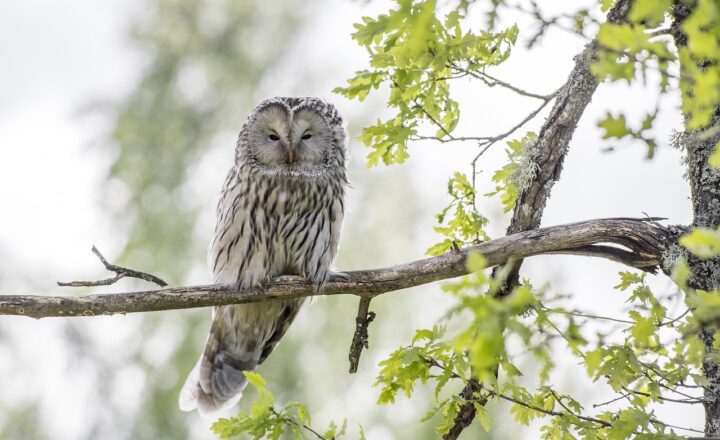Into the Wild: Exploring the Most Enigmatic Creatures on Our Planet
November 18, 2024

The natural world is filled with creatures that often leave us in awe and sometimes in bewilderment. From the depths of the oceans to the tops of the mountains, every environment hosts its unique inhabitants, each with adaptations that allow them to thrive in their specific habitats. This article aims to explore some of the most enigmatic creatures on our planet, illuminating the mysteries that surround them and highlighting their roles in the ecosystems they inhabit.
1. The Axolotl: The Eternal Adolescent
The axolotl, also known as the Mexican walking fish, is not a fish at all but an amphibian that belongs to the salamander family. Native to the lakes of Xochimilco in Mexico City, these creatures are remarkable for their ability to regenerate lost body parts. Whether it’s a missing leg, part of their heart, or even sections of their brain, axolotls can regrow them perfectly.
Moreover, axolotls remain in their larval form throughout their lives, a phenomenon known as neoteny. Unlike most amphibians that undergo metamorphosis, axolotls keep their gills and continue to live in water, which raises intriguing questions about developmental biology and genetics.
2. The Aye-Aye: Nature’s Unique Oddball
The aye-aye is a species of lemur found only in Madagascar and is arguably one of the strangest primates on Earth. With its large, expressive eyes, protruding front teeth that continually grow, and long, bony middle finger, the aye-aye has an appearance that can be described as both adorable and eccentric.
Aye-ayes employ a unique foraging technique known as percussive foraging where they tap on trees to locate larvae beneath the bark. Once they find their target, they use their elongated finger to extract the larvae. Despite its unusual qualities, the aye-aye is often misunderstood and considered a bad omen by local cultures, leading to its decline in numbers due to hunting and habitat loss.
3. The Pistol Shrimp: Nature’s Underwater Gun
The pistol shrimp, also known as the snapping shrimp, has evolved a unique ability to create one of the loudest sounds in the underwater world, which is a byproduct of its specialized claw. When the shrimp snaps its claw shut, it creates a cavitation bubble that collapses violently, producing a shockwave that can reach up to 210 decibels.
This sound can disorient predators and even stun small fish. The pistol shrimp is not only fascinating for its sound-producing capabilities but also for its symbiotic relationships with gobies, wherein they share a burrow in the sand, offering protection to each other in a remarkable example of cooperation in nature.
4. The Okapi: The Forest Giraffe
Often referred to as the “forest giraffe,” the okapi is endemic to the rainforests of the Democratic Republic of the Congo. With its unique appearance, it combines features of both the giraffe and the zebra, making it one of the most striking examples of camouflage in the animal kingdom. Their striped hindquarters break up their outline, helping them blend into the dense undergrowth.
Okapis are shy and elusive creatures, primarily solitary, and were largely unknown to the Western world until the early 20th century. Their elusive nature and the remote rainforests they inhabit have led to a dearth of information about their behavior, despite being a critical part of the ecosystem in their habitat, helping to distribute seeds through their eating habits.
5. The Glaucus Atlanticus: The Blue Dragon
This small, stunningly vibrant sea slug is known as the blue dragon and is famous for its beautiful iridescent coloration. Found floating in the warm waters of the oceans, the Glaucus atlanticus is a type of nudibranch that can grow up to three centimeters in length.
What makes this creature particularly captivating is its unique defense mechanism. It feeds on venomous jellyfish, such as the Portuguese man o’ war, and can store their stinging cells in its own tissue. This allows the blue dragon to use their stings against potential predators, making it both beautiful and dangerous.
6. The Saola: The Asian Unicorn
The saola, often referred to as the “Asian unicorn,” is one of the rarest mammals on the planet. Discovered only in 1992 in the Annamite Range of Vietnam and Laos, its elusiveness has earned it mythical status comparable to that of actual unicorns. The saola is critically endangered, with fewer than a few hundred believed to exist due to habitat loss and poaching.
With its long, straight horns and distinctive facial markings, the saola represents one of the most extraordinary discoveries in recent wildlife history. Conservation efforts continue to monitor the remaining populations, but the challenges they face highlight the urgent need for habitat preservation and species protection.
7. The Tarsier: The Tiny Night Hunter
Tarsiers are small primates found in Southeast Asia, known for their enormous eyes, which are larger than their brains. This adaptation helps them hunt effectively under the cover of darkness. Tarsiers are also unique in that they can rotate their heads almost 180 degrees, allowing them to survey their surroundings for potential prey.
A fascinating feature of tarsiers is their social behavior; they are known to have complex vocal communications and engage in territorial displays. Despite their small size and cute appearance, these nocturnal creatures are fierce hunters, feeding on insects, small birds, and even other small mammals.
Conclusion
Exploring the enigmatic creatures of our planet reveals not only the diversity of life that exists but also the delicate balance of ecosystems that depend on these species. Each of the creatures mentioned has unique adaptations that allow them to survive and thrive in their environments. As we continue to uncover the mysteries of our world’s wildlife, we must also focus on conservation efforts to ensure these species do not become mere footnotes in the annals of history.
The stories of these creatures remind us of the beauty of nature and the importance of every species in maintaining the health of our planet. For the sake of future generations, let us foster curiosity and respect for the wildlife that shares our world, supporting conservation initiatives that protect these magnificent beings and their habitats. By doing so, we honor the enduring spirit of exploration and the wonders of life on Earth.








